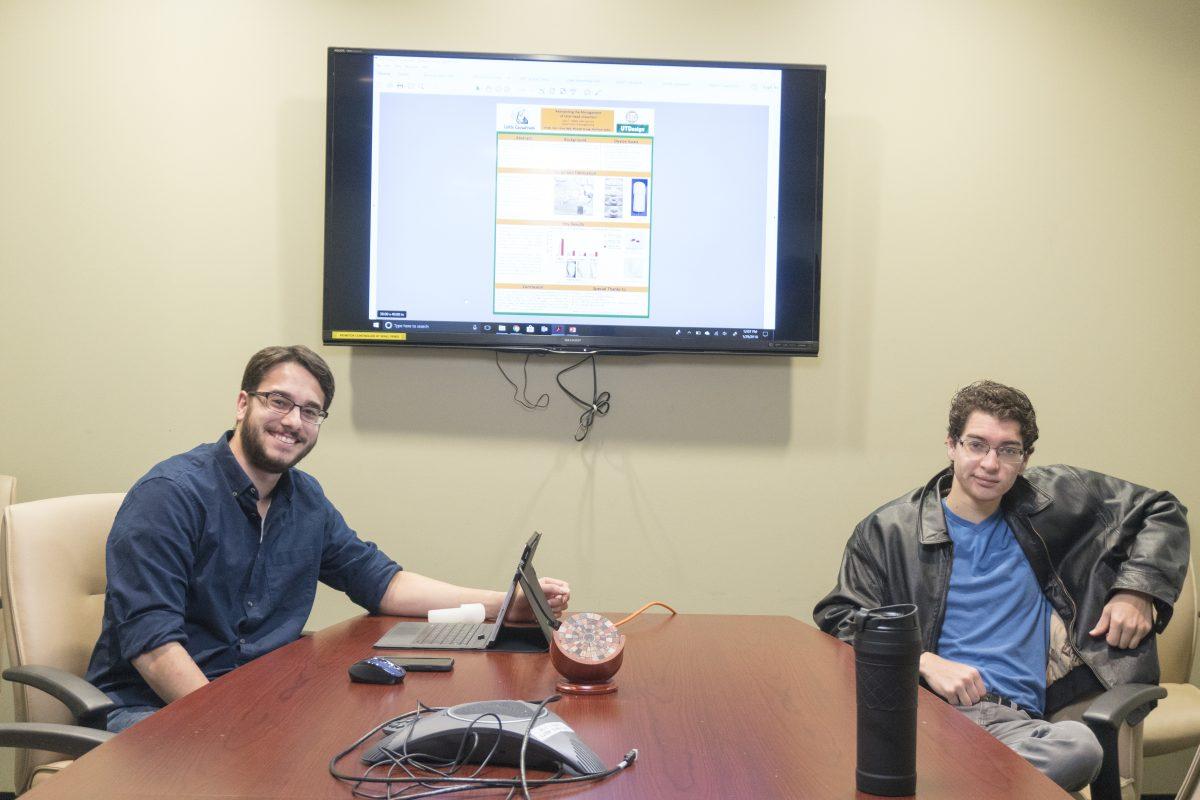UTD alumni created a device to help improve the speed and safety of emergency cesarean sections as their senior capstone project through UTDesign.
Biomedical engineering graduates Vinay Naik, Matthew Galles, Michael Bucag and Vineet Aziz worked together as the Little Caesareans, a name they chose in jest, to solve a prominent issue in medicine — the danger to both the mother and child during emergency C-sections. Their solution was to create a machine that can be quickly and easily used, and has a surface soft enough to avoid any damage to the baby.
The team based their design on an inflatable device used when medical professionals predict they will need to perform an emergency childbirth, however, the device can only be used preemptively. So, the group made a similar product that can be used without as much prior planning and that had more durability so it wouldn’t break during the operation, Naik said. The inflatable tip of the device provides a soft surface so the infant’s head can be unstuck from the mother’s pelvis without causing any damage.
“We did a really long brainstorming process over the summer,” Naik said. “Eventually, at the end of that process, we came up with the idea of inflatable fingertips.”
The reason the group chose to mount the device on the fingertips was to provide the professionals with tactile feedback, as this will allow them to feel where the device is inflating and ensure it is working as needed. Being able to feel the baby and the pelvis will help to properly position the device and ensure it won’t cause any harm to the baby or mother because of incorrect positioning.
“Sometimes a baby’s head can be too big for the mother’s pelvis, so an emergency C-section would need to be conducted,” Galles said. “Even after this, however, the baby’s head must still be removed from the pelvis, which, using current methods, can lead to damage to the baby’s skull.”
In addition to the risk of head injury to the baby, emergency C-sections can take too long, enough to risk fatal blood loss from the mother, Galles said. The team created a piece of hardware that can reduce the risks associated with C-sections.
“The student team goes through all the steps of the engineering process, so it’s like a real-world engineering project,” Naik said.
The fingertip mounted device is ready to be used in clinical settings, and the company the device was created for has the possibility of pursuing a patent, in which case the UTD alumni will be named as its inventors.
“I think my favorite part of the project was when I had the realization that we had actually created something functional that could save lives and make a difference in the world,” Aziz said. “It was fun to win the school competition, but I really hope some version of our device gets used in hospitals as soon as possible.”











